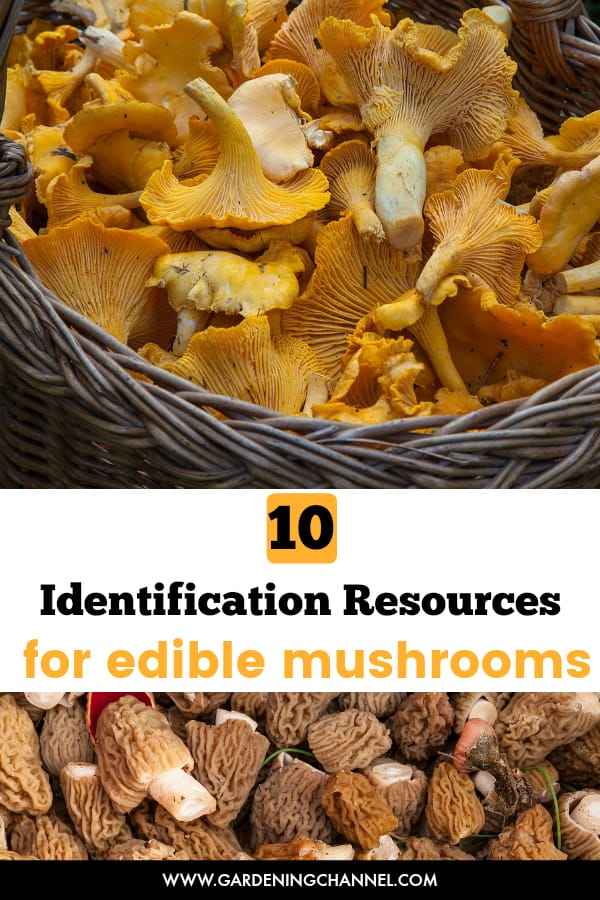A few generations ago, spring and summer meant mushroom foraging for many families. As centralized food sources became more common, people relied less and less on home gardens and wild foraging for food. In recent years, though, mushroom foraging has seen a resurgence in popularity. People appreciate the simple pleasure of hiking through woodlands and meadows in search of wild edibles. They also understand the nutritional benefits of these foods.
Before you grab a basket and embark on a mushroom picking expedition, though, keep in mind that many wild mushrooms are poisonous – some, in fact, are downright deadly. The Destroying Angel mushroom looks an awful lot like the white button mushrooms you find in your grocery store. 
Use a good field guide or take classes on mushroom picking before you venture out on your own. Better yet, take an experienced guide with you a few times. When you pick mushrooms, separate them by species into separate baskets. Do not eat any until you get home and can carefully evaluate each one. Avoid eating mushrooms that grow on golf courses or other areas treated with pesticides. And most importantly, if you’re unsure, throw it out.
Below are a few resources to get you started in your mushroom foraging venture.
Mobile Apps to Identify Mushrooms
- Roger Phillips, worldwide mushroom expert, has developed an app, Rogers Mushrooms, which offers 2,400 color photos of mushrooms. This comprehensive guide lists edible, hallucinogenic and poisonous mushrooms and offers suggestions and tips on how to safely identify them. The guide shows photos of mushrooms from different angles and also includes information on the size, habitat, color and season of each mushroom.
- The Audubon Mushroom Guide app is the most comprehensive app available for mushroom foraging. This app features beautiful color photographs of more than 500 mushroom species, along with species descriptions and a comprehensive search feature.
Websites to Identify Mushrooms
- Visit Living Afield website for comprehensive information on common mushroom varieties. The author provides tips for specific criteria and distinguishing characteristics for each mushroom listed. If the mushroom in question doesn’t meet all the criteria, the author says to skip it. Simple, common sense guide for basic mushroom foraging.
- The MycoKeys online identification site was developed by the University of Copenhagen, Denmark. This unique tool allows you to select specific characteristics of any mushroom you want to identify. First you select the type of mushroom, followed by color, habitat and size. The guide takes you through a thorough screening process.
Classes and Courses to Identify Mushrooms
- The Alderleaf Wilderness College in Seattle, Washington offers classes on numerous wildlife topics, including identifying wild mushrooms. Choose from weekend classes, week-long classes to a 9 month program.
- Twin Eagles Wilderness School in Sandpoint, Idaho, offers classes for both youth and adults on a variety of subjects, from foraging for mushrooms and edible plants to wilderness survival skills. The school also offers informative articles about mushroom hunting online.
- Mushroom Mountain in South Carolina is a mushroom farm and educational site. The farm offers field trips for kids, classes and foraging expeditions.
Books for Identifying Mushrooms
- Edible Wild Mushrooms of North America by David Fischer and Alan Bessette. This definitive guide offers clear descriptions of over 100 edible mushrooms, along with key tips for identifying them. The book also includes 70 recipes for using your wild mushroom bounty.
- Mushrooming Without Fear by Alexander Schwab debunks some of the common myths and folklore surrounding mushroom foraging, and offers sensible advice for safely picking mushrooms.
- Mushrooms Demystified by David Arora. Published in 1986, this book is still considered the definitive source for credible information on mushroom picking. Arora offers chapters on mushroom toxins, types of mushrooms, cooking with mushrooms and much more.
- National Audubon Society Field Guide to North American Mushrooms (National Audubon Society Field Guides) by National Audubon Society is a great all around field guide to identifying mushrooms.
By Julie Christensen
Julie Christensen learned about gardening on her grandfather’s farm and mother’s vegetable garden in southern Idaho. Today, she lives and gardens on the high plains of Colorado. When she’s not digging in the dirt, Julie writes about food, education, parenting and gardening.
Please note that links to Amazon from Gardening Channel are affiliate links.




I’m interested in taking a class in my local Atlanta area. Are there any in the field type of classes that you’re aware of close to me. I would like hands on experience with someone who has done this for quite some time and can share their knowledge.
Thank you,
Regina
I have some mushrooms growing in my yard. We can’t seem to figure out what type it is or if it’s bad for the dogs. I would like to send a few pictures if you could let me know.